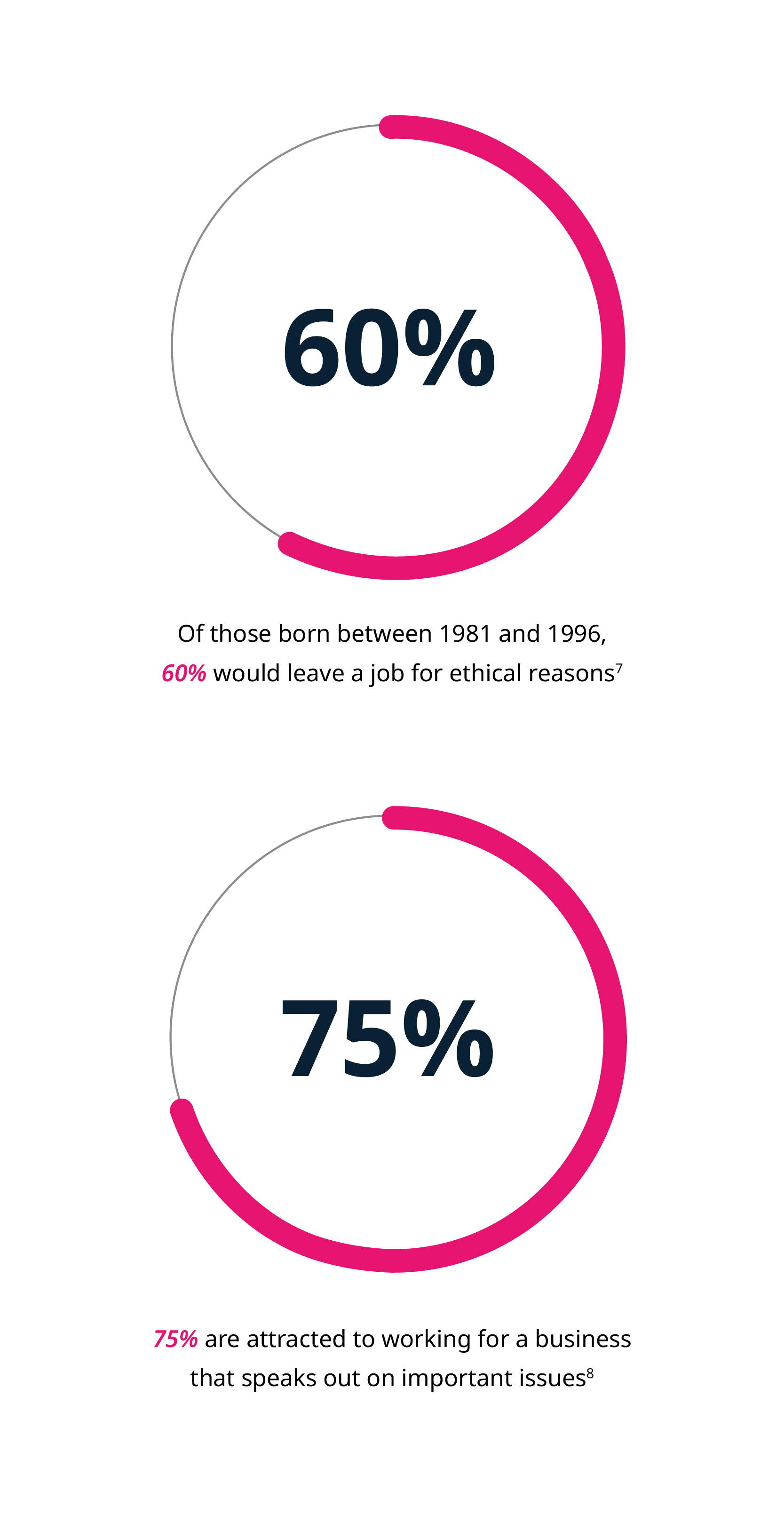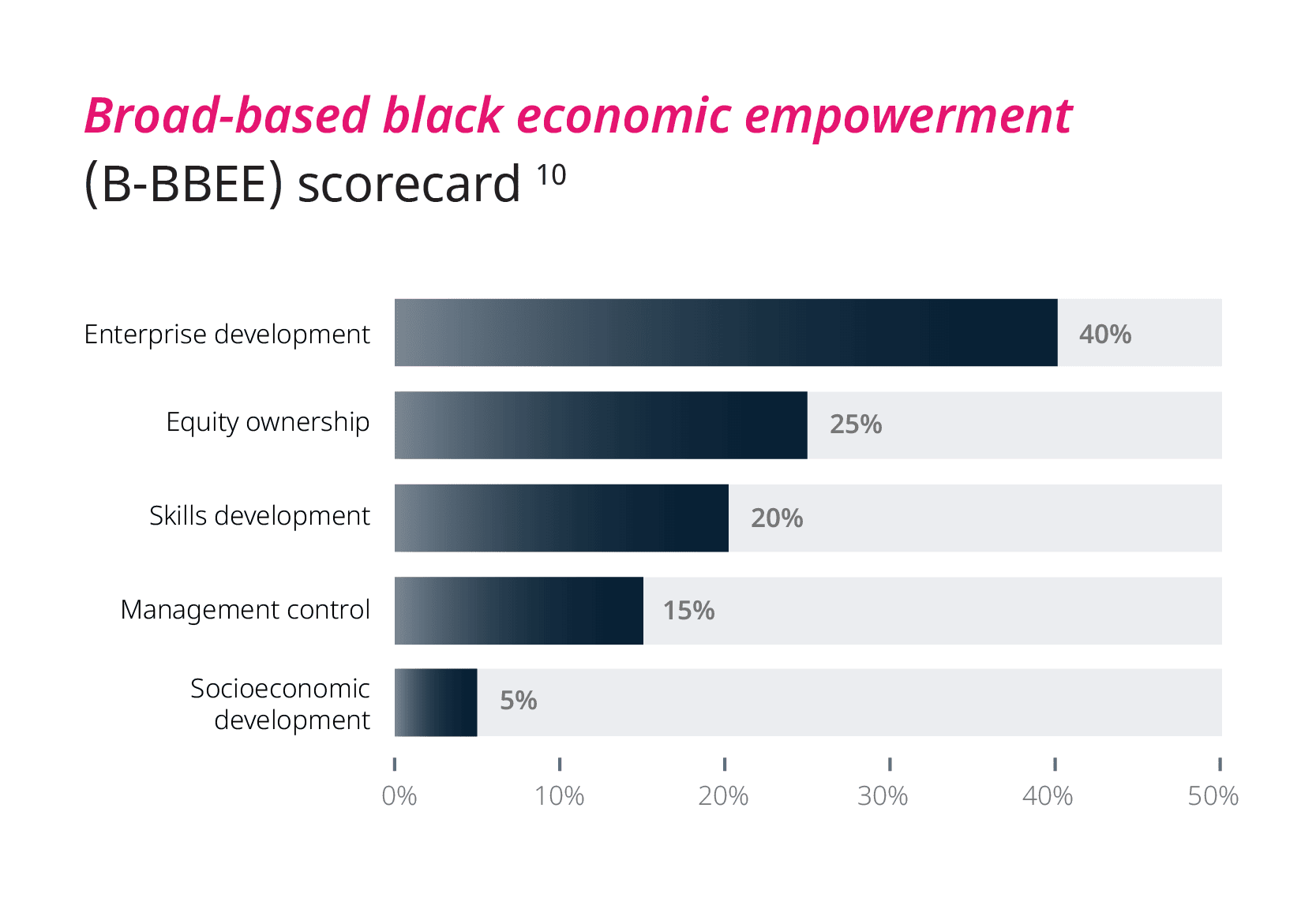Implementing a Successful Corporate Social Responsibility Strategy
In a 1970 article published in The New York Times, Milton Friedman told the world that corporate social responsibility (CSR) “revealed a suicidal impulse” in businesses.1
Things have changed a lot since then, and in today’s world, where social media helps to enforce accountability and younger generations are increasingly socially aware, a well-thought-out CSR initiative represents an opportunity to turn morality into money.2
What is CSR?
CSR is the extent to which a company manages its business processes in order to have a positive impact on the society and economy while minimizing any adverse impact on the environment.3
Are you satisfied with how much your business gives back? What are you doing to incite positive social impact? Merge your social responsibility with business-minded thinking by considering these four key ways CSR can boost your business’s profits.
1. Your corporate reputation matters
A study by Aflac found that 77 percent of consumers are more likely to buy from a company that supports and engages in activities to improve society.4 In turn, a Deloitte study found that purpose-driven companies experienced 30 percent higher innovation and 40 percent better staff retention than competitors.5 The prevailing theory in the CSR space suggests that millennials, who will comprise 75 percent of the workforce by 2025, are driving this trend and that Gen-Z have even stronger views.6

It’s clear that building a reputation as a good corporate citizen can give your business a competitive edge. But organizations should stay clear of shortcuts – social investment must be sincere. Deceptive or destructive business practices can quickly fuel damaging conversations online, making your organization more accountable than ever before.
Still, recruitment and customer satisfaction aren’t the whole picture. With sustainable business practices forming part of a solid CSR strategy, you’re more likely to attract investors. A study found three-quarters of investors’ decisions were informed by efforts to improve the environment. The trend is stronger among younger investors, with 41 percent of millennials putting significant effort into understanding a company’s CSR practices.9 Moreover, in countries like South Africa, where your broad-based black economic empowerment (B-BBEE) scorecard can grant you access to a large proportion of contracts, CSR can help you capitalize on lucrative deals.

2. The role of social responsibility in marketing
A socially responsible reputation can be applied to strengthen your marketing and better your brand. This can be thought of as corporate social marketing (CSM).11
Interestingly, brands grappling with consumers’ demands for more responsibility led to the development of the first CSR initiatives during the civil rights movement in the 1960s.12
Through CSM, marketers capitalize on society’s mounting interest in ethical business activities by making their social responsibility known, thus increasing their ultimate return on investment.
CSM is possible because CSR:
- Generates interest and inquiries around your business and its operations
- Provides the opportunity to share positive stories online that spread over social media
- Incites free media coverage and positive publicity at no extra cost to the business
But with the power of CSM comes the responsibility not to abuse it. Ever heard of greenwashing? This is the practice of overstating the effectiveness of a company’s environmental initiatives while downplaying its negative impacts on the environment in order to capitalize on the demand for sustainability.13
Numerous websites expose dishonest companies, meaning those insincere CSM efforts ultimately have the opposite effect to what was intended. This is a testament to the fact that, in the age of widely accessible information, your business can’t get away with being irresponsible.
On the other hand, this ease of disseminating information means that when you’re doing the right thing, people will like you and talk about you, making marketing easier and more rewarding.
3. Corporate social responsibility and employee engagement
“When you’re surrounded by people who share a passionate commitment around a common purpose, anything is possible.”
Howard Schultz, former CEO of Starbucks
In fact, one study found that 85–90 percent of employees would be more inspired, motivated, and productive working for a company with a clear purpose, and which involved employees in that purpose.14 With happy employees who feel connected to your organization’s purpose, strong relationships and teamwork are inevitable, as individuals are unified by a common cause.
But that’s not all. By structuring a CSR strategy around your company’s primary service, your employees’ quality of work can be maximized even further. CSR can serve to strengthen and extend the insights, skills, and strategies of your employees, which can then be applied in your workplace.15

The common thread: Through CSR initiatives, staff can sharpen their skills and gain an understanding of the wider impact of your business. This can present opportunities to develop new business ideas, products, and services.
When Paul Polman became CEO of Unilever, one of the world’s oldest and most successful consumer goods multinationals, he created the Unilever Sustainable Living Plan. The goal of this 10-year scheme was to double earnings while reducing the company’s environmental footprint. The plan’s goal was to drive sustainability in concert with business growth, innovation, and talent retention. As a result, Unilever delivered 290 percent total shareholder return.16
4. Secure your company’s future
Done right, CSR isn’t something for the short term; it’s about achieving long-term results and business continuity. Think of CSR as ‘shaping a more sustainable society’ along with a stable socioeconomic environment in which your business can continue to operate and grow.
By focusing on how your business – who you are and what you do – can make a positive difference in your community, you can create real public value. And by ensuring that you also benefit from the value created, your CSR initiative will last.
How to make CSR work for you
Wondering about next steps? Start by brainstorming. Could your business benefit from a new CSR initiative or the optimization of a current one? Use this CSR Toolkit to kick off your strategy.
Then, present your ideas to your colleagues. If you’re onto something good, you’ll be respected for your efforts and your career may benefit. If your idea is implemented correctly, your business may benefit. And if everything goes according to plan, it could be the start of something bigger.
Gain future-minded skills with a range of sustainability courses
- 1 Friedman, M. (Sep, 1970). ‘A Friedman doctrine – The social responsibility of business is to increase its profits’. Retrieved from The New York Times.
- 2 Murphy, C. (Jun, 2021). ‘Why social responsibility matters to businesses’. Retrieved from Investopedia.
- 3 Fernando, J. (Feb, 2022). ‘Corporate social responsibility (CSR)’. Retrieved from Investopedia.
- 4 Stobierski, T. (Jun, 2021). ‘15 Eye-opening corporate social responsibility statistics’. Retrieved from Harvard Business School Online.
- 5 O’Brien, D., et al. (2020). ‘2020 Global Marketing Trends’. Retrieved from Deloitte.
- 6 Aziz, A. (Mar, 2020). ‘The power of purpose: The business case for purpose (All the data you were looking for pt 2)’. Retrieved from Forbes.
- 7 (2021). ‘Return on Action Report 2021’. Retrieved from Atlassian.
- 8 (2021). ‘Return on Action Report 2021’. Retrieved from Atlassian.
- 9 Stobierski, T. (Jun, 2021). ‘15 Eye-opening corporate social responsibility statistics’. Retrieved from Harvard Business School Online.
- 10 Akwasi, T. (Jan, 2021). ‘What is BEE? BBBEE levels explained 2021’. Retrieved from Briefly.
- 11 Amyx, S. (Apr, 2020). ‘How commitment to CSR improves the bottom line’. Retrieved from Forbes.
- 12 Ledecky, M. (Nd). ‘Corporate social responsibility: Past, present, and future’. Retrieved from EVERFI. Accessed on February 22, 2022.
- 13 Chen, J. (Feb, 2022). ‘Guide to green investing’. Retrieved from Investopedia.
- 14 (Aug, 2020). ‘Employee Perspectives on Responsible Leadership During Crisis’. Retrieved from Porter Novelli.
- 15 Stobierski, T. (May, 2021). ‘The benefits of corporate social responsibility training’. Retrieved from Harvard Business School Online.
- 16 Kerrigan, S. & Kulasooriya, D. (Jul, 2020). ‘The sustainability transformation: Look ahead, look inside, and look around’. Retrieved from Deloitte.